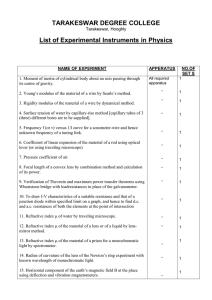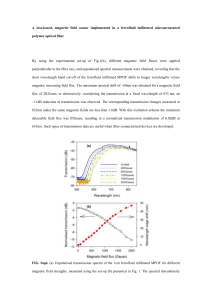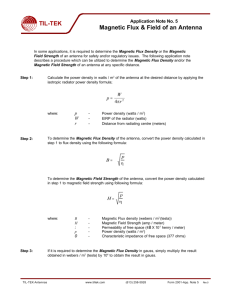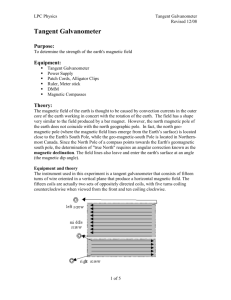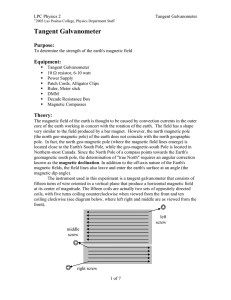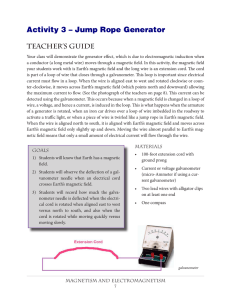Hall Effect Measurements as a Set of Serial Experiments in the
advertisement
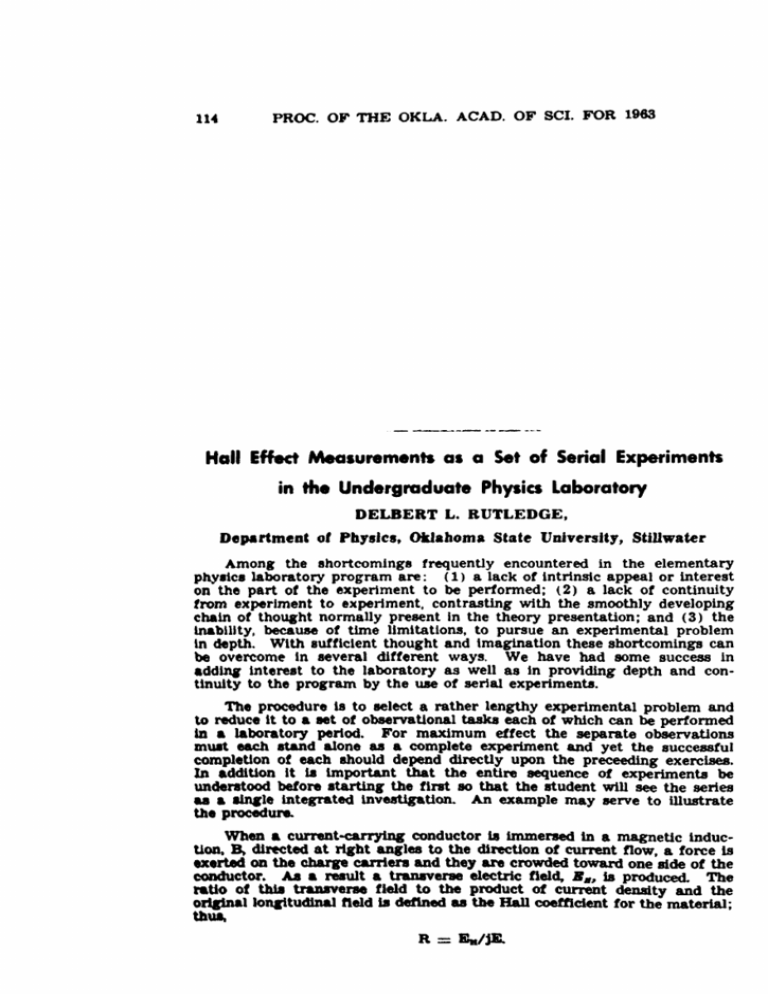
114 PROC. OF THE OKLA. ACAD. OF SCI. FOR 1963 Hall Effect Measurements as a Set of Serial Experiments in the Undergraduate Physics Laboratory DELBERT L. RUTLEDGE, Department 01 Phys'cs, Oklahoma State University, Stillwater Among the shortcomings frequenUy encountered in the elementary phylics laboratory program are: (1) a lack of intrinsic appeal or interest on the part of the experiment to be performed; (2) a lack of continuity from experiment to experiment, contrasting with the smoothly developing chain ot thouaht normally present In the theory presentation; and (3) the lnabllJty, because of time llmitations, to pursue an experimental problem in depth. With sufficient thought and imagination these shortcomings can be overcome In several different ways. We have had some success In addin&' interest to the laboratory as well as In providing depth and continuity to the program by the use of serial experiments. The procedure 18 to select a rather lengthy experimental problem and to reduce It to a . t of observational tasks each of which can be performed lD a laboratory period. For maximum effect the separate observations muat each stand alone as a complete experiment and yet the successful completion of each should depend direcUy upon the preceeding exercises. In addition It 18 Important that the entire sequence of experiments be understood before starting the first so that the stUdent wlll see the series as a alncle integrated inveatlgation. An example may serve to illustrate the procedure. Wben a current-earrylDg conductor 18 Immersed In a magnetic inductiOil. Bt dlrected at right angles to the direction of current now, a force 18 exerted OIl the charIe carriers and they are crowded toward one stde of the conductor. As a result a tranaverae electric field, B.~ is produced. The ratio of thla traD8Ver8e field to the product of current dens1ty and the oJ:l&ln&I loncttudlnal tleld is detlned as the Hall coetfIclent for the materlal; thua. R = Ew/jl't 115 PHYSICAL SCIENCES The student is to measure the Hall coefficient for a sample of b1smuth in the form of a flat ribbon. In addition the sign of the charge carrier and the density and mobiUty of the carriers are to be determined. The experiment is performed over a period of three weeks. With the exception of the bismuth sample, sample holder and magnet, all the equipment required is normally available in any undergraduate laboratory. The bismuth is commercially available (Fitzpatrick Electric Supply Co., 4« Irwin Avenue, Muskegon, Wis.) and is held in a plexlglass sample holder by cUps of spring brass which also form the current and potentiometer contacts. We use a war-surplus magnetron magnet (Edmund SClentttlc Co., Barrington, N. J.) with shims introduced to reduce the width of the air gap. CALIBRATION OF THE BALLISTIC GALVANOMETER FOR MAONETIC FLUX ~SUREMENTS The first laboratory period, after a brief development of the overall problem, is devoted to the calibration of a balllstic galvanometer for magnetic flux measurements. A long solenoid (see Fig. 1) has a small sec- 1\ Fig. 1. t---------II'..... --.J Galvanometer calibration. ondary wound about the central portion. The primary 18 connected to a DC power supply through a tap switch and the secondary to the galvano- meter through a small variable series resistance. When the tap switch i. opened or closed an induced Emf is produced in the secondary and a momentary current flow deflects the galvanometer. The effective flux I' through the secondary is given by the solenoid equation = F ,.NN'AI where 1 is the primary current, N and N' are the primary and secondary turns, and A 18 the cross sectional area of the IIOlenoid proper. Galvaaometer deflections are plotted against total magnetic flux to provide aD fnstnunent calibration curve. A quick investigation shows that the detlection is a1IIO a tunction of the secondary resistance and therefore the student must mea.sure the reeJ8tance of the search coU circuit to be U88d in the following week's experiment before prodUcing the calibration curve. This first period gives the student IIOJne contact With induced Emf. resistance measurement. magnetic field of a solenoid, and lnatrument ea1lbration. 116 PROC. OF THE OKLA. ACAD. OF SCI. FOR 1963 MEABVUMENT or MAGNEmC FLux DENSITY During the aecond laboratory period the student UBe8 a search con tecbnique with the baWat1c galvanometer to measure the magnetic inducUon of the magnetron magnet. The student is expected to investigate the boJnOl'eDe1ty of the field .. well .. to determine the magnetic induction at the center of the pole piece. The search coil 18 intentionally wound with an apprec1able waJJ thlcknesa 80 that it is necessary carefully to eonaider wch queatlona as the meaning of "coil area". The action of the relatively large coll as an averaging or integrating device is considered and the effect of removal time on galvanometer deflection 18 investigated. The experiment 18 completed when the student has determined the average magnetic induction in the area to be occupied by the bismuth sample in the following week'. work. DETEaMINATION or THE HALL CONSTANT The final week ot the ..ries 18 devoted to measurement ot the Hall The bilJ11uth ribbon 18 placed In the magnetic field (see Fig. 2). a direct current 18 established In the sample and the transverse Hall (~onatant. Fig. 2. Hall voltage circuit. voltage 18 meuured with a potentiometer. The current through the aample and the corresponding potential dltterence al80 are recorded. A simple voltage-dlVlded shunt 18 used to estabUah Unes of equipotential for the potentiometer contacts in the ab8enee of the magnetic field. The !tudent then calculates the Hall Coefficient. R, the density, tI, and the carrier mobUlty. "'. from the relationships: R := EH/JE. m = ERIBE. -; = mE, and n = I/qA; where q 18 the carrler charce and -; 18 the mean carrier drift velocity. 'lbe eonatancy of the HaJJ Coefftclent under varlaUona in current flow 18 invest!pted aDd mapeto-resiataDce effects are obeerved. 'I'Id8 phaae of the experiment nqulree U8e of the potentiometer, meaaurIDg ml.scroecope, and other lutnunents au lD a natural experimental eetting. Results have proven to be quite CODId8tent and comparable to pUbJlabed values. I have found that tbia type of eerIal experiment baa been relatively effective in lltimuJaUDc atudent interest. and in provldiDg a more reaUst1c eettlnc tor tbe U88 of many expeI'lmental 1n8tnunenta.

